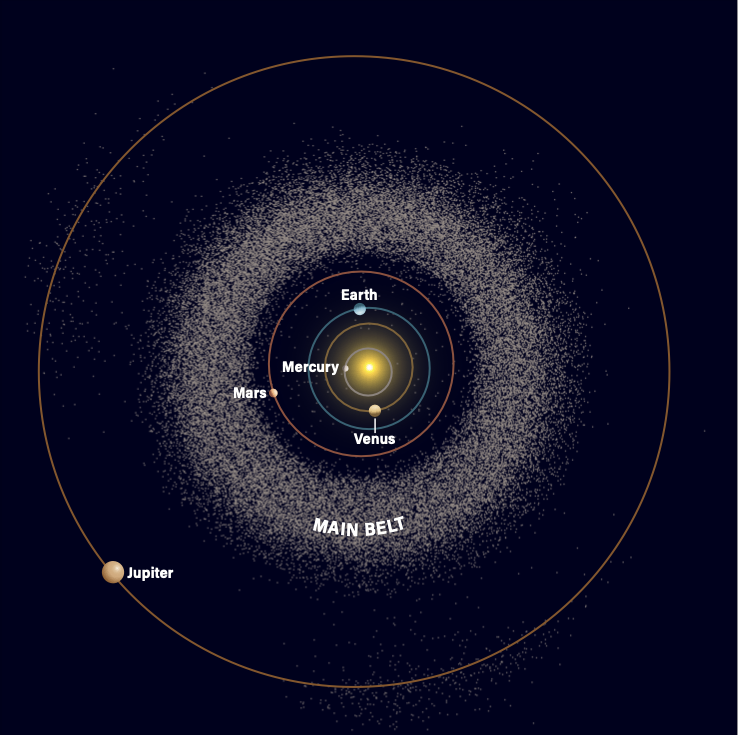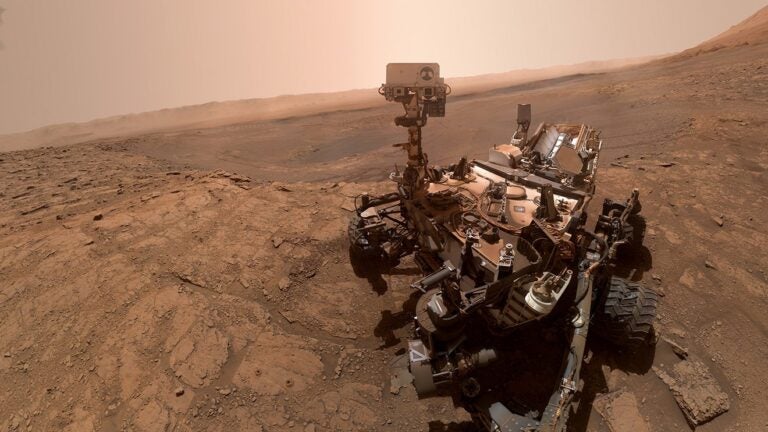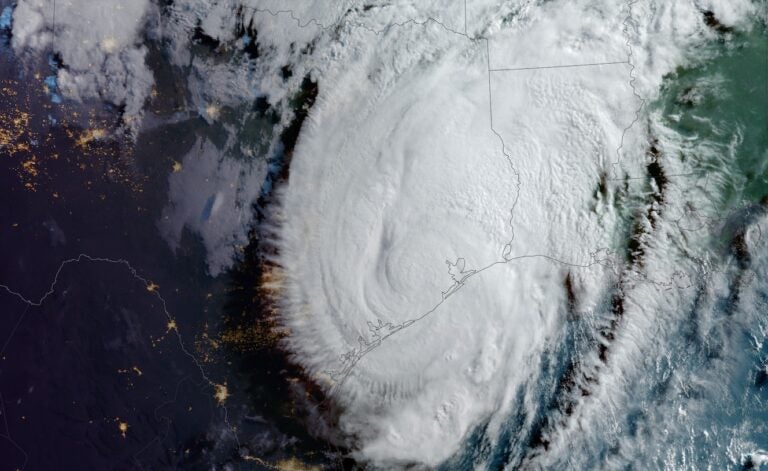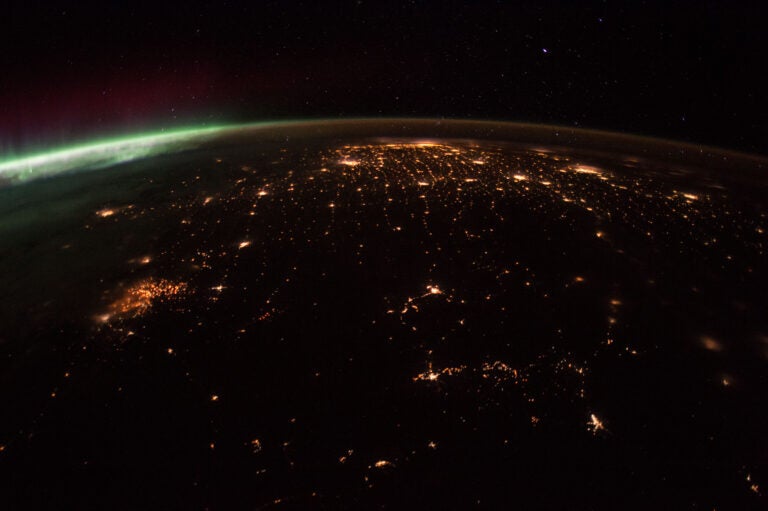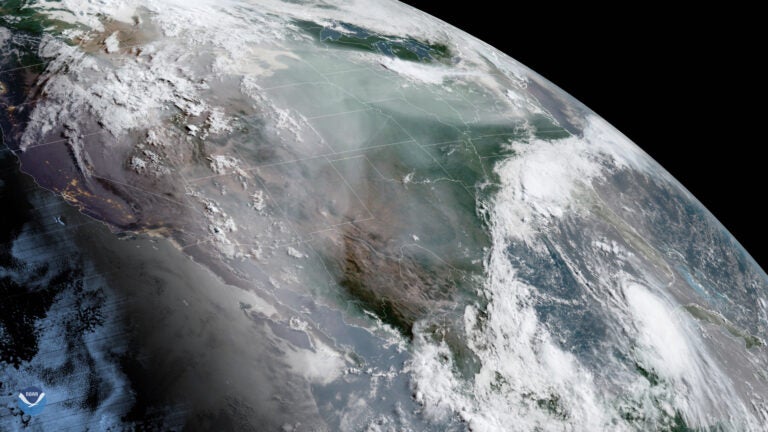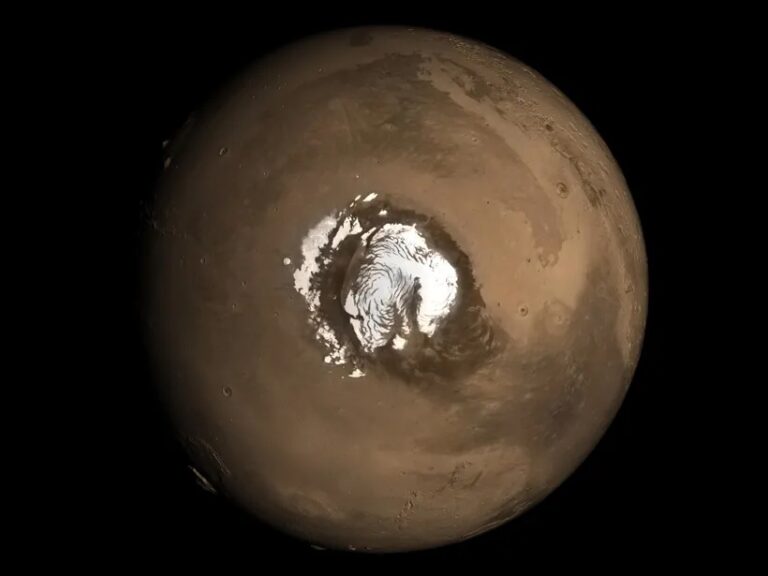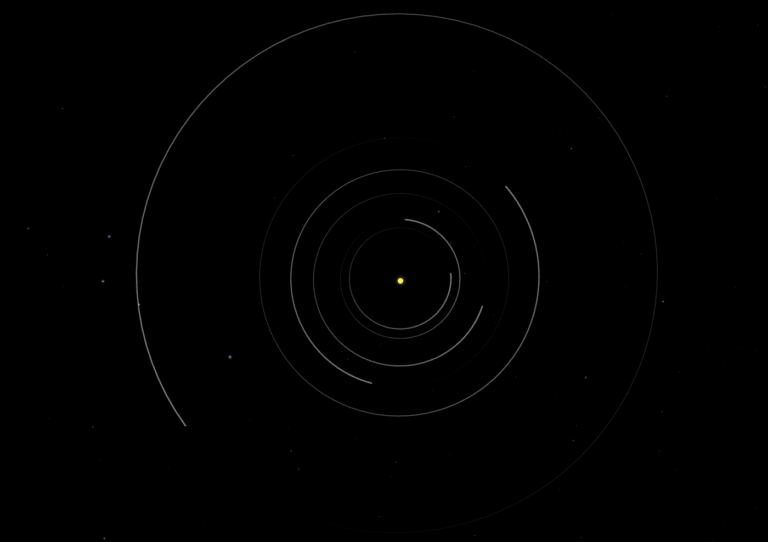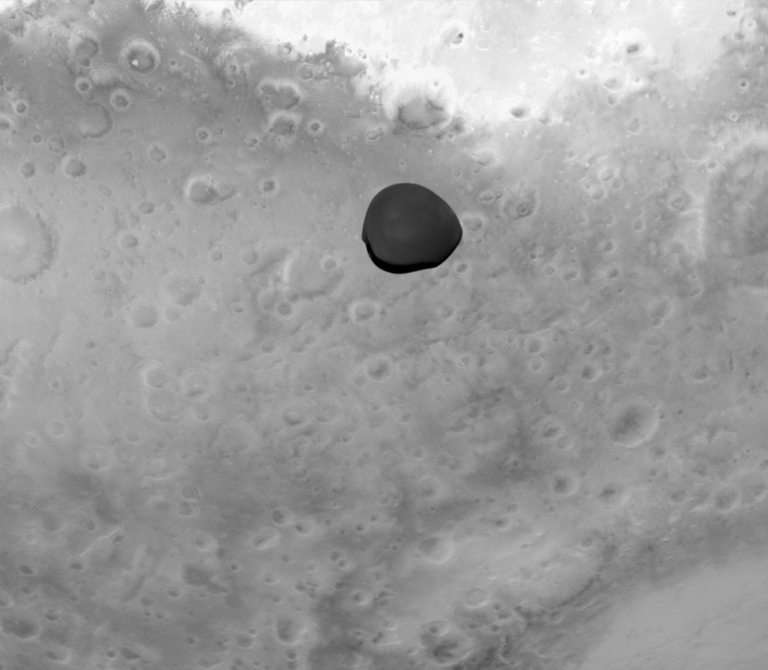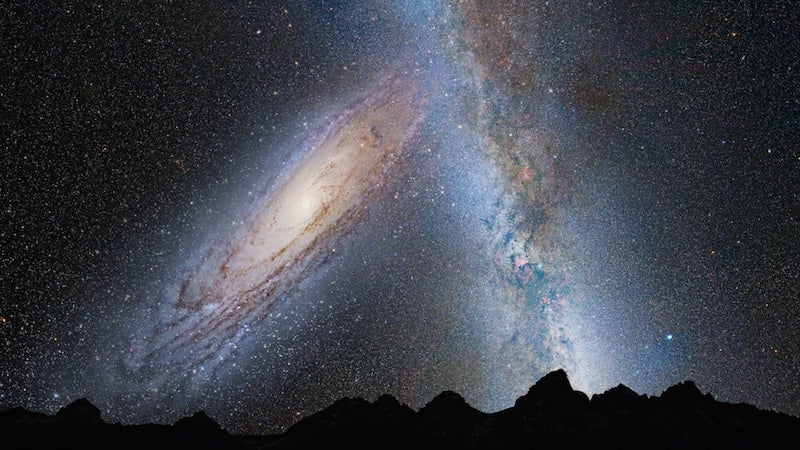
What will happen to the solar system when the Milky Way completes the merger with the Andromeda Galaxy?
Bryan Mitchell
Maricopa, Arizona
Your excellent question affords us the opportunity to distinguish between near-certain astronomical predictions and those which are far less so.
Astronomers predict that our home galaxy and the nearest major galaxy to it, Andromeda (2.5 million light-years away), will collide and eventually merge between 3.9 billion and 5.6 billion years from now. They’ve been fairly certain about this since 2012, when researchers precisely measured the motions of many stars within the Andromeda Galaxy and found that these stars were approaching the Milky Way. Presently, the two galaxies are moving toward each other at 250,000 mph (402,300 km/h), so that in the time required for you to read this sentence, the separation between Andromeda and the Milky Way will have diminished by nearly 800 miles (1,300 km).
Astronomers also know that these two galaxies will not merely crash together. Instead, they’ll undergo a series of encounters. According to a recent model, the first merger will occur about 3.9 billion years from now. The galaxies will then separate, slow down, and move back toward each other before colliding again in 5.1 billion years. The subsequent separation will be briefer, because their gravity will prevent them from straying too far apart. In about 5.4 billion years, the two galaxies will finally merge into a galaxy of more than 1 trillion stars.
So what will all this galactic motion do to the solar system? Honestly, we can’t provide an answer with any certainty. The most educated guess so far comes from T.J. Cox and Avi Loeb of the Harvard-Smithsonian Center for Astrophysics. They published a paper in the May 2008 issue of Monthly Notices of the Royal Astronomical Society entitled “The Collision Between the Milky Way and Andromeda.” (Admittedly, be wary of the term “collision.” Even a galaxy containing billions of stars is mostly empty space. To quote a December 2023 Astronomy.com article, “if the Sun were a pingpong ball, then Proxima Centauri [the closest star to the Sun] would be a pea about 680 miles [1,100 km] away.”)
In that paper, they predict a 50 percent chance that our solar system will be pushed away from the galactic core by three times its current distance of 26,660 light-years. That displacement would propel the solar system toward the outer edge of the newly formed supergalaxy. Cox and Loeb also calculate that there is a 12 percent chance that the turbulent collisions will eject the solar system into the vast gulf of intergalactic space.
As for the solar system itself, stellar models assure us that the Sun will still be a main sequence star during these mergers, although it will be reaching the end of its core-hydrogen-burning phase. There will be no life on Earth at this time — increasing solar luminosity will have eradicated all life about 2.8 billion years before the first Milky Way/Andromeda close encounter. However, if this were not true, and provided that Earth wasn’t dislodged from the solar system itself, even the solar system’s ejection into intergalactic space wouldn’t imperil life on this planet. Remember, we rely on only one star: the Sun. Being propelled away from the other stars, though not an ideal situation from an astronomer’s point of view, would cause us little harm. Based on the distance to Proxima Centauri (4.2 light-years), the Sun and its attendant bodies are isolated within a sphere of some 310 cubic light-years. So, we’re quite displaced from the other stars already and we’re still alive and well.
Edward Herrick-Gleason
Staff Member, Southworth Planetarium, University of Southern Maine, Portland, Maine

